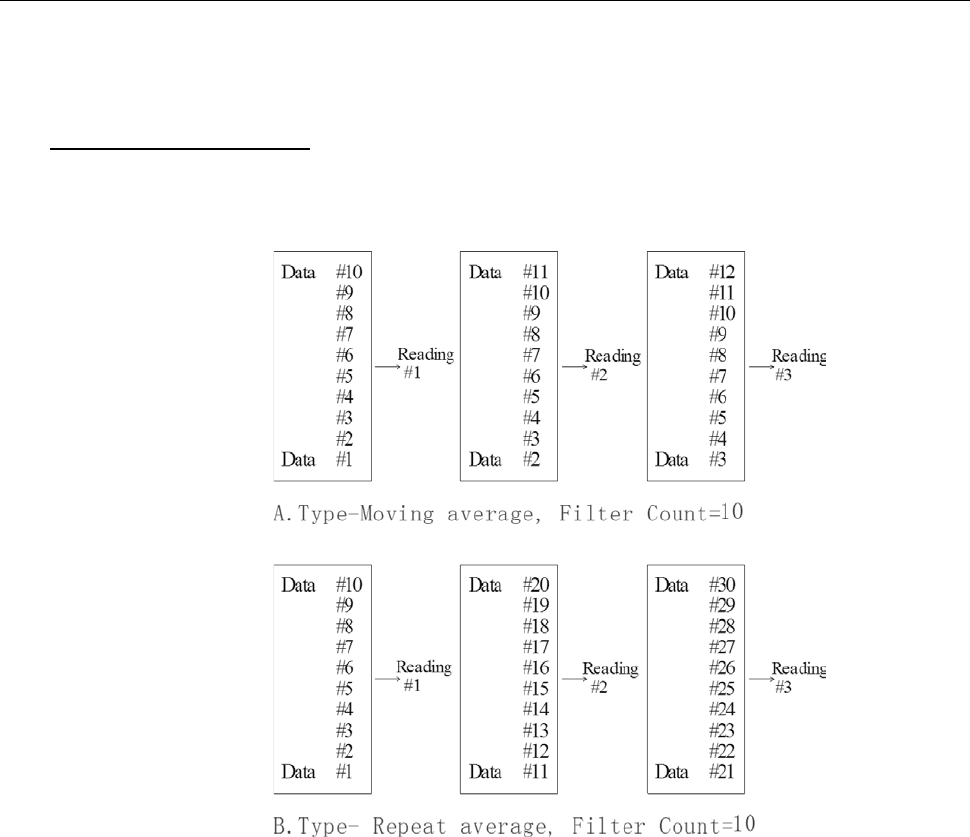User manual
Table Of Contents
- 1.1 Feature Overview
- 1.2 Input Power and Fuse Requirements
- 1.3 Package Contents
- 2.1 Front Panel Overview
- 2.2 Screen Display
- 2.3 Front Panel Menu Options
- 2.4 Front Panel Menu Overview
- Rear Panel Summary
- 2.6 Power up
- 3.1 Overview
- 3.2 Measuring Voltage
- 3.3 Measuring Current
- 3.4 Measuring Resistance
- 3.5 Measuring Frequency and Period
- 3.6 Measuring Continuity
- 3.7 Testing Diode
- 3.8 Math Functions
- 4.1 Measurement configuration
- 4.2 Trigger Operations
- 4.3 Buffer Operations
- 4.4 Limit Operations
- 4.5 System Operations
- 5.1 Selecting an Interface
- 5.2 USB & RS-232 Interface Operation
- 5.3 GPIB Interface operation (model 5492BGPIB only)
- 5.4 Data Format
- 6.1 Command Structure
- 6.2 Command Syntax
- 6.3 Command Reference
- 7.1 Frequently Asked Questions
- 7.2 Error Messages
- 8.1 Technical Specifications

Measurement Options
39
the oldest conversion is discarded, and the stack is re-averaged, yielding a new reading. See Figure 4-1
below.
B.
For the repeating average filter, the stack is filled and the conversions are averaged to yield a reading.
The stack is then cleared and the process starts over as shown in Figure 4-1.
Repeat Average (REPEAT)
Figure 4-1 Moving average and repeating average filters
Response Time
The filter parameters have speed and accuracy tradeoffs for the time needed to display, store, or output
a filtered reading.
4.1.3 Relative
The relative operation can be used to null offsets or subtract a baseline reading from present and future
readings. When relative function is enabled, the multimeter uses the present reading as a relative value.
Subsequent readings will be the difference between the actual input value and the relative value.
You can define a relative value for each function. Once a relative value is set for a measurement function,
the value is the same for all ranges. For example, if 2 V is set as a relative value on the 12 V range, the
relative is also 2 V on the 1000 V, 120 V, 1.2 V or 120 mV ranges.
Additionally, when you perform a zero correction for DCV, Ω2 or Ω4 measurements by enabling REL, the










